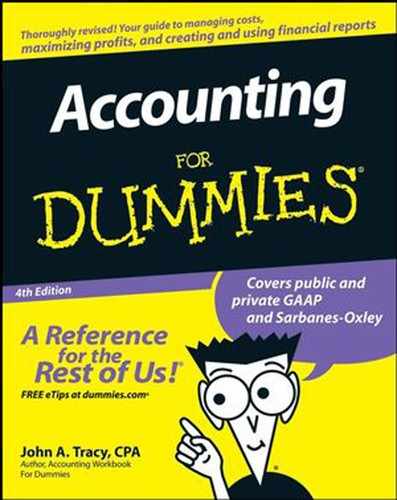13.2. Becoming a More Savvy Investor
An investment opportunity in a private business won't show up on your doorstep every day. However, if you make it known that you have money to invest as an equity shareholder, you may be surprised at how many offers come your way. Alternatively, you can invest in publicly traded securities, those stocks and bonds listed every day in The Wall Street Journal. Your stockbroker would be delighted to execute a buy order for 100 shares of, say, Caterpillar for you. Keep in mind that your money does not go to Caterpillar; the company is not raising additional money. Your money goes to the seller of the 100 shares. You're investing in the secondary capital market — the trading in stocks by buyers and sellers after the shares were originally issued some time ago. In contrast, I invested in the primary capital market, which means that my money went directly to the business.
You may choose not to manage your securities investments yourself. Instead, you can put your money in one or more of the thousands of mutual funds available today, or in an exchange-traded fund (a recent type of investment vehicle). You'll have to read other books to gain an understanding of the choices you have for investing your money and managing your investments. Be very careful about books that promise spectacular investment results with no risk and little effort. One book that is practical, well written, and levelheaded is Investing For Dummies, 4th Edition, by Eric Tyson (Wiley).
|
Investors in securities of public businesses have many sources of information at their disposal. Of course, they can read the financial reports of the businesses they have invested in and those they are thinking of investing in. Instead of thoroughly reading these financial reports, they may rely on stockbrokers, the financial press, and other sources of information. Many individual investors turn to their stockbrokers for investment advice. Brokerage firms put out all sorts of analyses and publications, and they participate in the placement of new stock and bond securities issued by public businesses. A broker will be glad to provide you information from companies' latest financial reports. So, why should you bother reading this chapter if you can rely on other sources of investment information?
Looking beyond financial reportsInvestors don't rely solely on financial reports when making investment decisions. Analyzing a business's financial reports is just one part of the process. You should consider these additional factors, depending on the business you're thinking about investing in:
Whew! This kind of stuff goes way beyond accounting, obviously, and is just as significant as financial statement analysis when you're picking stocks and managing investment portfolios. |
NOTE
The more you know about interpreting a financial report, the better prepared you are to evaluate the commentary and advice of stock analysts and other investment experts. If you can at least nod intelligently while your stockbroker talks about a business's P/E and EPS, you'll look like a savvy investor — and you may get more favorable treatment. (P/E and EPS, by the way, are two of the key ratios explained later in the chapter.) You may regularly watch financial news on television or listen to one of today's popular radio financial talk shows. The ratios explained in this chapter are frequently mentioned in the media.
This chapter covers financial statement ratios that you should understand, as well as warning signs to look out for in audit reports. (Part II of this book explains the three primary financial statements that are the core of every financial report: the income statement, the balance sheet, and the statement of cash flows.) I also suggest how to sort through the footnotes that are an integral part of every financial report to identify those that have the most importance to you.

